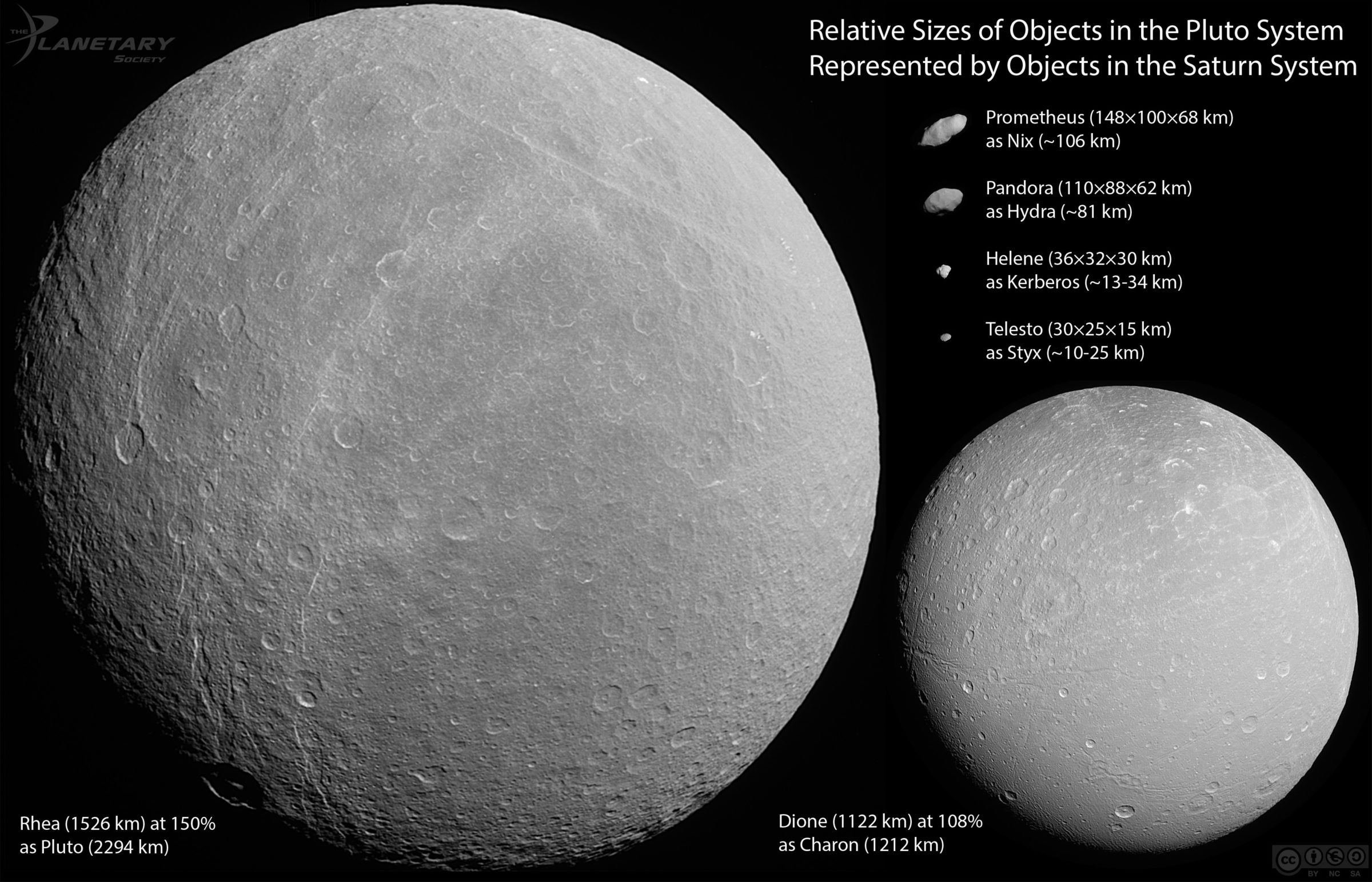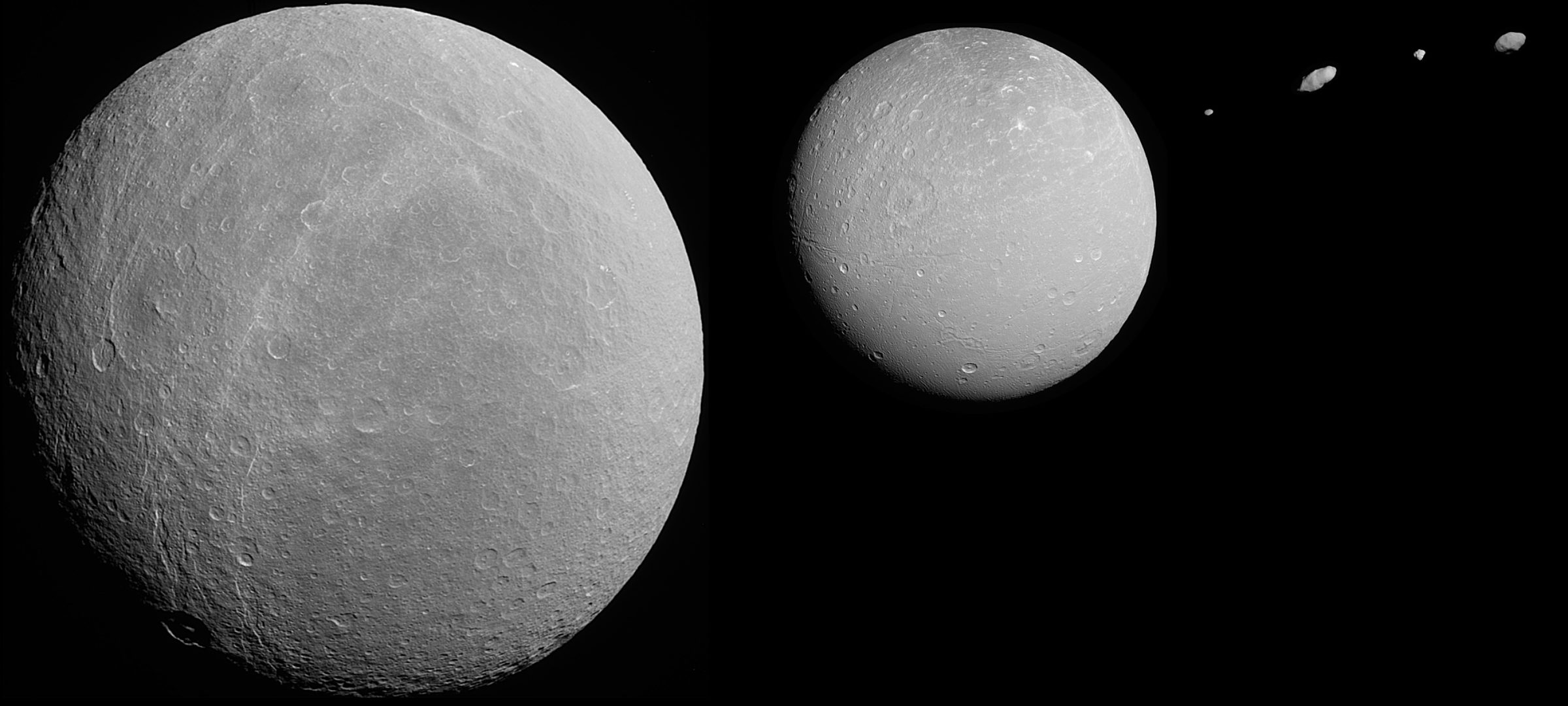Bruce Murray Space Image Library
Relative sizes of objects in the Pluto system represented by objects from the Saturn system (annotated)

The scale of the full-size graphic is 1 kilometer per pixel. The four small moons of Saturn are shown at their correct sizes since the sizes of Pluto's moons are not known sufficiently precisely to warrant any tinkering with the scale. Dione (standing in for Charon) and Rhea (standing in for Pluto) are scaled to 108 and 150 percent of their actual sizes, respectively.
Original images are:
Telesto N1507754457 taken October 11, 2005
Rhea N1516199412 taken January 17, 2006
Dione N1569853291 taken September 30, 2007
Prometheus N1640497752 taken December 26, 2009
Helene N1646320028 taken March 3, 2010
Pandora N1654245770 taken June 3, 2010
Here is an alternative, unlabeled version, with the objects in their correct orbital order: Pluto (represented by Rhea), Charon (represented by Dione), Styx (represented by Telesto), Nix (represented by Prometheus), Kerberos (represented by Helene), and Hydra (represented by Pandora).



 Explore Worlds
Explore Worlds Find Life
Find Life Defend Earth
Defend Earth

